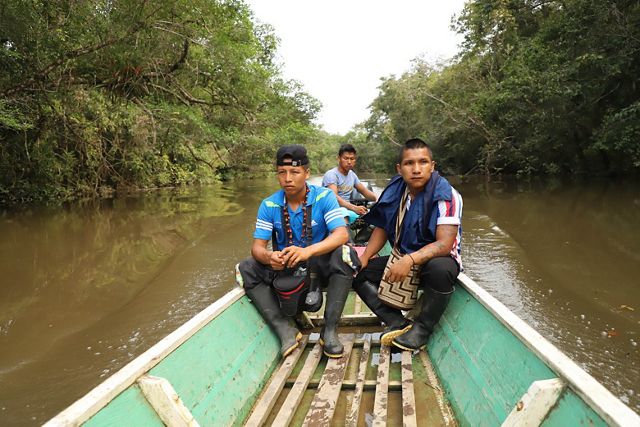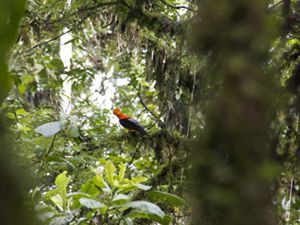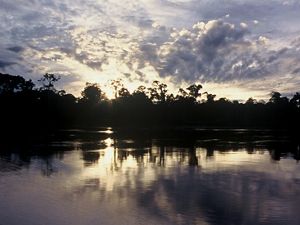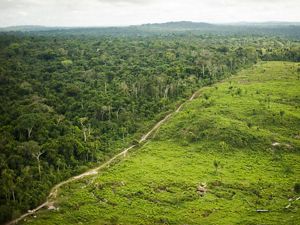The Nature Conservancy envisions a healthy, connected and resilient Amazon Basin where biodiversity and freshwater ecosystems, and their contribution to people, are maintained, improved, and protected.

Did You Know?
The 34 million people who live in the Amazon basin rely on fish as a primary source of food and income. A loss of any species would be devastating. Changing the flow and connectivity of rivers means lose the Amazon as we know today.

An Epic Journey: The Great Migration of the Dorado Catfish, Connecting Life Through the Amazon Basin
From the Amazon River headwaters high in the Andes mountains to the river’s mouth at the Atlantic Ocean—and back again—the Dorado catfish (Brachyplatystoma rousseauxii) records the longest migration of any freshwater fish in the world. Watch An Epic Journey to follow the catfish’s 11,000 km roundtrip journey and discover the importance of conserving the Amazon River for nature and people.
Through the lens of the Dorado catfish, the documentary explores the importance of protecting the Amazon River for its unparalleled biodiversity and the Indigenous People and Local Communities that depend on it. Through interviews with leading scientists, conservationists and local community members, the film explores:
- the current state and threats of the Amazon River,
- the role of local communities as “the guardians” of these ecosystems,
- and the importance of maintaining connected, free-flowing rivers through transboundary collaboration.

Protecting the free-flowing river of the Amazon is vital. Without it, millions of people will be left without drinking water, a source of protein from local fish, and their livelihoods.
The Amazon River: A Source of Life
The Amazon River originates in the Andean cordillera (or mountains) 6,600 meters above sea level. It gathers water from seven nations (Ecuador, Colombia, Brazil, Bolivia, Peru, Venezuela, and Guyana) before reaching the Atlantic Ocean. There are more than 2,700 known fish species in the Amazon Basin (1,900 of which are endemic), which amounts to roughly 8% of the world's fish species. Roughly 35 new species are described every year at an average of one every 10 days.
More than just it’s amazing diversity of life, the Amazon River is a life source for more than 47 million people living on its riverbanks and throughout its basin. Nearly 2.2 million Indigenous People, representing more than 400 different ethnic groups, call the basin home. For many, fish from the river is their main source of protein. A single person may consume close to 500g of fish every day in certain communities. Importantly, the river itself and the animals living in it are revered in local cultures.
But the health of the Amazon River is under threat. Hydroelectric dams, invasive species and pollution continue to degrade its waters. Deforestation and conversion to agriculture, mining, urban sprawl and other stresses affect the flow and quality of water entering the river, too.
To conserve the Amazon River basin, we must address these different and connected challenges—and fast.
Indigenous People and Local Communities (IPLC) living along the length of the Amazon River play an important role in its stewardship and will be key to its future sustainability. Indigenous territories (ITs) and protected areas (PAs) cover around 50% of the Amazon basin. IPLC actions can protect the river from terrestrial threats and ensure the health of threatened aquatic ecosystems. Elevating their tenure and role as natural stewards of the environment and its living resources are critical elements of TNC’s Amazon-wide conservation effort.



